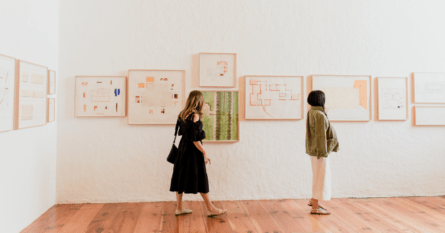Estimated reading time: 12 minutes
Embark on an enthralling expedition through time as we unravel the tales of the most renowned women’s history destinations and delve into the awe-inspiring legacies of female trailblazers who have left an indelible mark on society.

In recent years, women’s history tours have emerged as a popular way to explore the contributions of women, featuring destinations such as suffragette landmarks, feminist movements, and women’s museums. In this article, we’ll take you on a journey through some of the top women’s history destinations around the world and explore why they are so important to our understanding of women’s heritage.
Seneca Falls, New York, U.S.
Seneca Falls, located in the state of New York, is often considered the birthplace of the women’s suffrage movement in the United States. In July 1848, a group of women activists organized the first women’s rights convention in the Wesleyan Chapel in Seneca Falls. The convention was attended by over 300 people, including men and women, who discussed women’s rights and drafted the “Declaration of Sentiments.” The declaration was modeled after the United States Declaration of Independence and called for equal rights for women, including the right to vote.

In 1920, after decades of struggle, the 19th Amendment to the U.S. Constitution was passed, granting women the right to vote. Today, the Women’s Rights National Historical Park in Seneca Falls preserves the legacy of the women’s suffrage movement and the history of women’s rights in the United States.
The park includes several historic sites, including the Wesleyan Chapel where the first women’s rights convention was held, the Elizabeth Cady Stanton House, where Stanton- a prominent suffragist, social activist- lived and worked, and the M’Clintock House, where the Declaration of Sentiments was drafted. Visitors can take guided tours of the historic sites and explore the exhibits on the history of the women’s suffrage movement at the visitor center.
In addition to the Women’s Rights National Historical Park, Seneca Falls is also home to the National Women’s Hall of Fame, which honors and celebrates the achievements of women who have made significant contributions to society. The Hall of Fame features exhibits on the lives and accomplishments of over 300 inductees, including Susan B. Anthony, Eleanor Roosevelt, and Maya Angelou.
A visit to Seneca Falls is a must for anyone interested in women’s history and the fight for gender equality. The town’s rich legacy and the efforts and dedication of its residents have had a lasting impact on the advancement of women’s rights in the United States and around the world.
Washington, D.C., U.S.
Washington, D.C., the bustling political capital of the United States, has a rich history of women’s activism and feminist movements. From the early suffragette marches to modern-day women’s rights demonstrations, the city has been a hotbed of political and social change. It boasts numerous landmarks and museums dedicated to women’s history and is a must-visit destination for anyone interested in learning about the contributions of women to society.
One of the most noteworthy sites in Washington, D.C. for women’s history is the National Women’s Party (NWP) headquarters, located near the Capitol Building. The NWP was a key player in the women’s suffrage movement and played a critical role in securing the passage of the 19th Amendment, which granted women the right to vote in 1920. The headquarters now serves as a museum and memorial to the suffragette movement, and visitors can explore exhibits on the history of the NWP, learn about the women who fought for suffrage, and view artifacts from the movement.
Washington, D.C. is also home to the Smithsonian National Museum of American History, which features exhibits on the history of women’s rights and social justice movements in the United States. The museum’s “American Democracy: A Great Leap of Faith” exhibit includes a section dedicated to the women’s suffrage movement and features artifacts such as protest signs and letters from suffragettes.
Another important landmark in Washington, D.C. is the Mary McLeod Bethune Council House National Historic Site, which honors the life and legacy of the educator and civil rights leader Mary McLeod Bethune. The site was Bethune’s home and served as the headquarters of the National Council of Negro Women, which Bethune founded in 1935. Visitors can explore the museum’s exhibits on Bethune’s life and work, as well as the contributions of African American women to the civil rights movement.
San Diego, California, U.S.
San Diego’s long-standing tradition of women’s activism and its unwavering dedication to women’s health and well-being make it an excellent destination for anyone interested in learning about the vital role women have played in shaping history and society.
One of the most significant sites in San Diego for women’s history is the Women’s Museum of California. The museum, located in Liberty Station, is dedicated to preserving and promoting the contributions of women to history, arts, and culture. The museum’s exhibits cover a wide range of topics, from women’s suffrage and civil rights to the role of women in science and technology.
San Diego hosts the Women’s History Reclamation Project, which seeks to uncover and preserve the stories of women who have played an important role in the city’s history. The project has identified and marked several sites throughout the city that are important to women’s history, including the home of suffragette Dr. Charlotte Baker and the site of the 1912 San Diego Free Speech Fight, which was led by activist Emma Goldman.
San Diego also has a number of other sites and landmarks connected to women’s history and activism. The Women’s Equity Council, which was founded in 1972 to promote women’s rights and gender equity in San Diego, has been instrumental in advocating for policies and programs that support women’s economic and social well-being. The council’s efforts have resulted in the creation of programs such as the San Diego Commission on the Status of Women and the Women’s Business Center.
Manchester, UK
Manchester, a city located in northwest England, has played an important part in the history of the women’s suffrage movement in the United Kingdom. In the late 19th and early 20th centuries, Manchester was a hub of feminist activism, with a number of influential suffragettes and women’s rights activists living and working in the city.
One of the most famous suffragettes associated with Manchester is Emmeline Pankhurst, who founded the Women’s Social and Political Union (WSPU) in 1903. The WSPU was a militant organization that campaigned for women’s suffrage through direct action and civil disobedience. Pankhurst and other suffragettes were arrested multiple times for their activities, and many went on hunger strikes in prison.
The Pankhurst Centre, located in Manchester, is the former home of Emmeline Pankhurst and her family. The building now serves as a museum and community center dedicated to the history of the women’s suffrage movement and the legacy of the Pankhurst family. Visitors can explore the museum’s exhibits on the history of the WSPU, learn about the life and work of Emmeline Pankhurst, and attend events and workshops on women’s rights and activism.
Manchester also houses the People’s History Museum, which tells the story of democracy and the struggle for equality in the United Kingdom. The museum features exhibits on the history of the labor movement, the suffragettes, and other social and political movements that have shaped British history. Visitors can explore the museum’s collections of artifacts, documents, and interactive displays and learn about the role of ordinary people in the fight for democracy and social justice.
Oxford, UK
Oxford, located in southeast England, boasts one of the world’s most prestigious universities, the University of Oxford. The university has a long history of women’s education and played a crucial role in advancing women’s rights in the United Kingdom.

In 1879, Oxford University established the first women’s college, Lady Margaret Hall, followed by St. Anne’s College in 1879 and Somerville College in 1879. These colleges provided women with access to higher education and paved the way for the admission of women to other colleges and universities in the UK.
One of the most famous Oxford alumni is the writer and women’s rights activist, Virginia Woolf. Woolf was a member of the Bloomsbury Group, a circle of writers, intellectuals, and artists who were known for their progressive views on social and cultural issues. Woolf’s feminist writings, including her essay “A Room of One’s Own,” are considered landmarks in the history of women’s rights and continue to inspire and influence feminists around the world.
Today, visitors to Oxford can explore the city’s legacy of women’s education and activism. The Oxford Women’s History Walk, a self-guided walking tour, takes visitors to some of the city’s most significant women’s historical landmarks, including Lady Margaret Hall, St. Anne’s College, and Somerville College. The tour also includes stops at the homes of notable women such as the writer and theologian Dorothy L. Sayers and the physician and suffragette Dr. Elsie Inglis.
In addition to the Women’s History Walk, visitors can also explore the Oxford University Museum of Natural History, which features exhibits on the achievements of women in the field of science, and the Bodleian Library, which houses a vast collection of books, manuscripts, and archives related to women’s history and activism.
Paris, France
Paris, often called the city of love and lights, has a rich history of literature and feminist theory. French feminist writer and philosopher Simone de Beauvoir, for instance, wrote her seminal work “The Second Sex” in Paris, in which she explored the cultural and social construction of gender and argued for the liberation of women from the oppression of patriarchy.
Paris is also home to the Musée Curie, which celebrates the life and work of physicist and chemist Marie Curie, the first woman to win a Nobel Prize. The museum houses her laboratory, personal papers, and many of the instruments she used in her research. Visitors can explore her groundbreaking discoveries in radioactivity and learn about her contributions to the development of the x-ray machine during World War I.
In addition to the Musée Curie, Paris has several other museums dedicated to women’s history. The Musée National de l’Orangerie, for example, features works by renowned female artists such as Berthe Morisot, one of the founding members of the Impressionist movement, and Mary Cassatt, an American artist who was closely associated with the French Impressionists. The museum is located in the Tuileries Gardens and also features Claude Monet’s famous “Water Lilies” series.
Paris also has various monuments and landmarks dedicated to the achievements of women. The Panthéon is a mausoleum that houses the remains of many of France’s most famous citizens, including scientists, writers, and politicians. Among them is Marie Curie, who was the first woman to be interred in the Panthéon based on her own merits.
Melbourne, Australia
Melbourne, the coastal capital of the Australian state of Victoria, boasts several prominent women’s historic landmarks and monuments. One of the most notable is the statue of Vida Goldstein, located in Queensbridge Square. Goldstein was a prominent suffragette who fought for women’s right to vote in the early 20th century, and in 1903, she became the first woman in the British Empire to stand for election to a national parliament. The statue commemorates her achievements and serves as a reminder of the importance of women’s activism in shaping the course of history.
Another notable women’s historic landmark in Melbourne is the Gertrude Street Precinct, which is home to a number of women-led businesses and organizations. The precinct was named after Gertrude Steinberg, who was a prominent social worker and activist in the early 20th century. Today, the precinct is a hub for feminist and LGBTQ+ activism, and it serves as a gathering place for people who are working to advance women’s rights and social justice.
Melbourne is also the headquarters of the Victorian Women’s Trust, which was established in 1985 to promote women’s equality and social justice. The trust sponsors a range of programs and initiatives, including advocacy work, community organizing, and education and training programs. It is also home to the Mary Delahunty Endowment, which supports women’s leadership and community development projects across Victoria.
Finally, Melbourne is known for its vibrant arts and culture scene, which features the works of many talented female artists and writers. The city is also where you can find the Women’s Circus, which provides training and performance opportunities for women and non-binary people, as well as the Emerging Writers’ Festival, which showcases the work of up-and-coming writers from diverse backgrounds.
Buenos Aires, Argentina
One of the most iconic landmarks of women’s history in Buenos Aires is the Plaza del Congreso, located in front of the National Congress building. This square has been the site of countless demonstrations and protests, including many led by women advocating for their rights. In particular, the square has been a focal point for the Ni Una Menos movement, which emerged in Argentina in 2015 to protest violence against women.
Another must-visit destination for women’s history enthusiasts is the Evita Museum, located in the Palermo neighborhood. The museum is dedicated to the life and legacy of Eva Perón, the legendary First Lady of Argentina who was an advocate for women’s rights and social justice. The museum features exhibits and artifacts that showcase her life, including her iconic clothing and personal effects.
Buenos Aires is also home to the Women’s Plaza of the Republic, which was established in 2006 to honor the efforts and dedication of women to Argentine society. The plaza features a series of statues and monuments dedicated to prominent women throughout the country’s history, including women’s rights activists, educators, artists, and more.
For a deeper dive into the history of women’s rights in Argentina, visitors can check out the National Women’s Museum, located in the San Telmo neighborhood. The museum features exhibits and displays that showcase the contributions of women throughout Argentine history, including their roles in politics, culture, and society.
Finally, Buenos Aires is known for its vibrant tango scene, and visitors can explore the role that women have played in this iconic dance form by visiting venues such as La Catedral Club in the Almagro neighborhood. The club offers tango lessons and performances and is particularly known for its welcoming and inclusive atmosphere for people of all genders and backgrounds.


